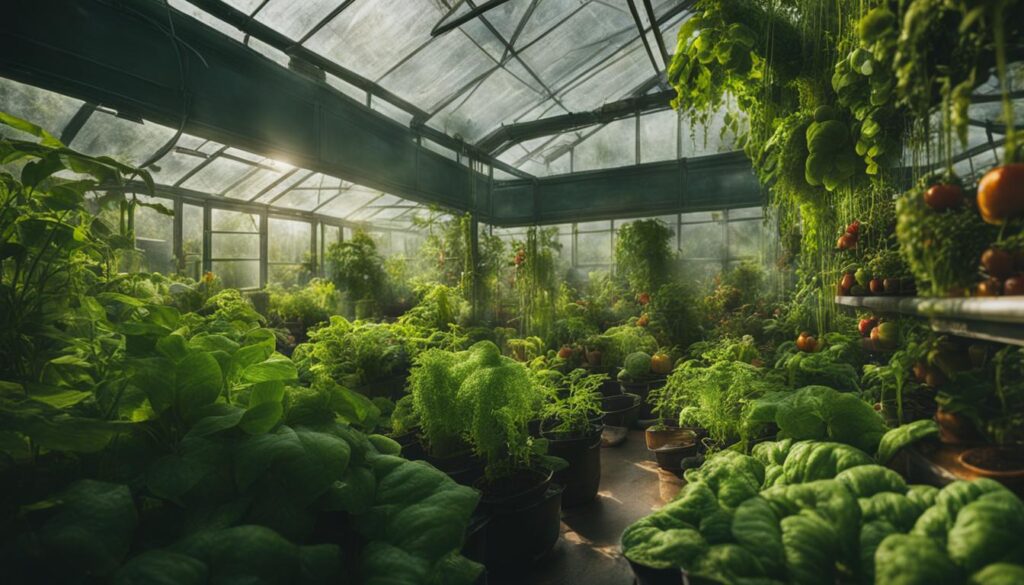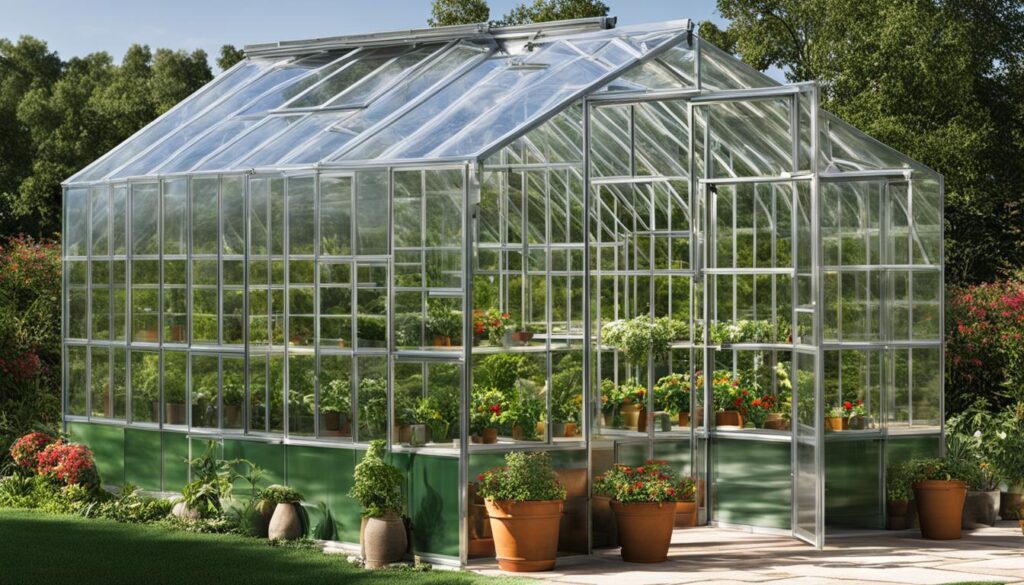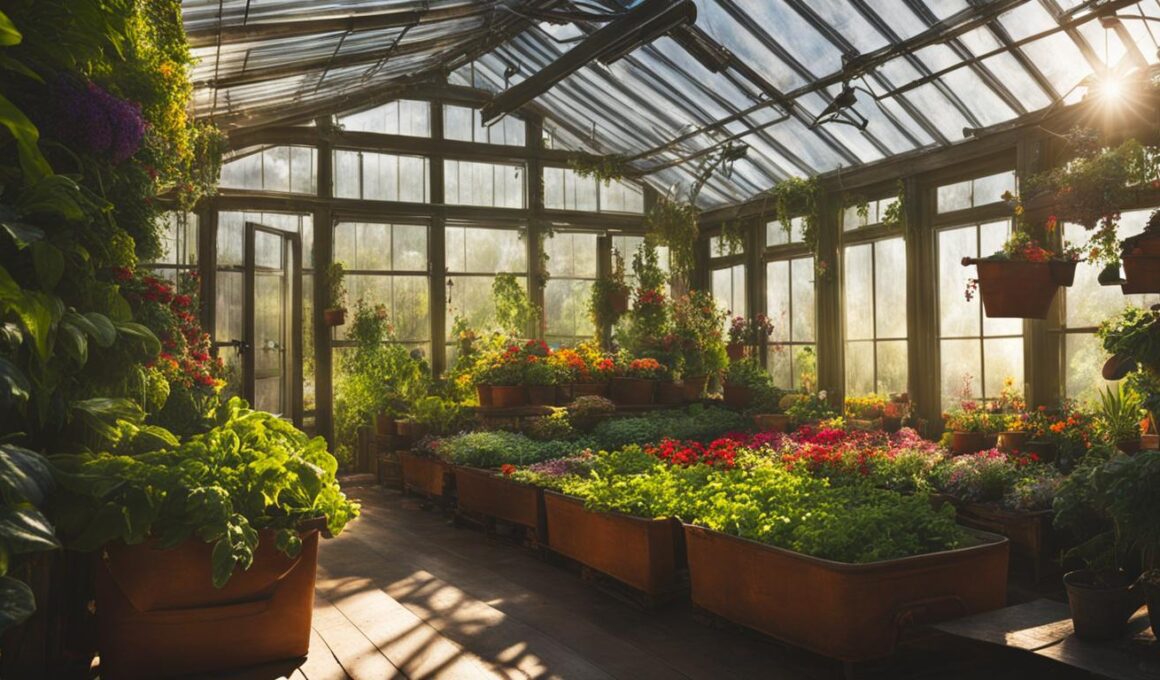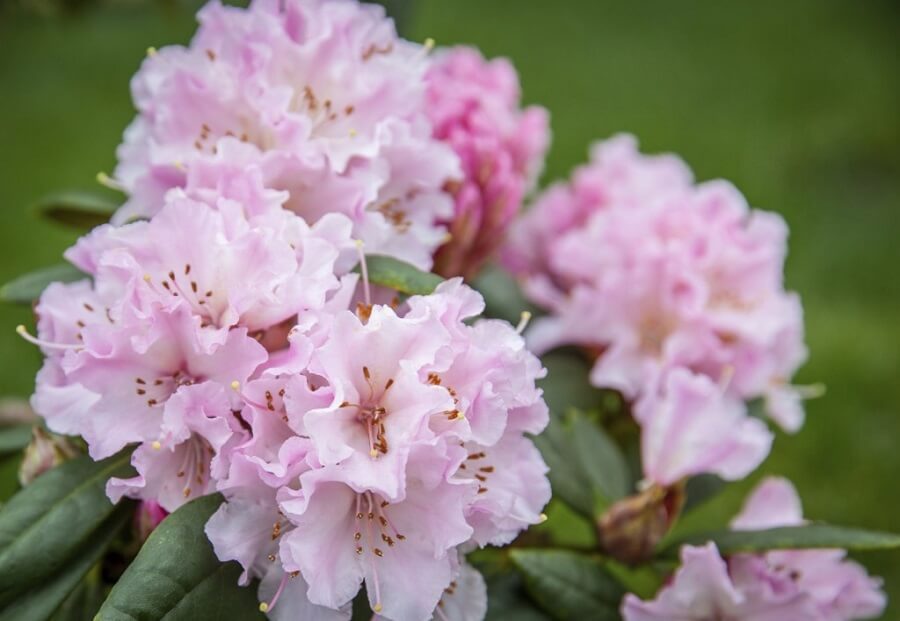Welcome to our article on greenhouses! Whether you’re an avid gardener or just curious about these fascinating structures, we’ve got you covered. In this section, we’ll explore the basics of greenhouses and how they work to create the perfect environment for plant growth. So, let’s dive in and discover some surprising facts about greenhouses!
Post Summary:- Greenhouses are structures designed to cultivate plants in a warm and humid environment.
- They work by trapping the sun’s heat inside, creating a controlled climate for plant growth.
- Greenhouses are energy-efficient, using natural sunlight to heat the interior.
- They extend the growing season and allow delicate plants to thrive.
- Greenhouses can be made from various materials and can be customized to fit the needs of any gardener or plant enthusiast.
What Are Greenhouses and What Do They Do?
A greenhouse is a structure made of glass or other transparent materials in which plants are cultivated. The main purpose of a greenhouse is to create a warm and humid environment that is necessary for plants to thrive. Greenhouses act as a sheltered space that allows sunlight and rain to reach the plants inside, providing a controlled environment for plant growth. They are particularly useful for growing delicate plants that would not survive outdoors and for extending the growing season of other plants.
Greenhouses can also be used to start seedlings earlier in the year, giving them a head start on the growing season. The controlled environment inside a greenhouse helps protect plants from harsh weather conditions, such as frost or extreme temperatures. By trapping the sun’s heat, greenhouses maintain a consistent temperature and provide plants with the warmth they need to grow and thrive.
Whether you’re a seasoned gardener or just starting out, a greenhouse can be a valuable addition to your gardening toolkit. It offers a space where you can nurture a wide variety of plants, creating your own little oasis of greenery. With a greenhouse, you have the power to control the climate and extend the growing season, allowing you to grow plants that would otherwise be challenging in your region. So, if you’re looking to take your gardening to the next level, consider investing in a greenhouse.
Benefits of Greenhouses:
- Creates a warm and humid environment for plants
- Allows for year-round growing
- Protects delicate plants from harsh weather conditions
- Extends the growing season
- Provides a controlled environment for starting seedlings
- Reduces reliance on artificial heating methods
How Do Greenhouses Work and How Are They Able to Create a Warm and Humid Environment for Plants?
Greenhouses are able to create a warm and humid environment for plants by utilizing key design features that trap heat and control temperature and humidity levels. Understanding how greenhouses work can help you optimize the conditions for your plants’ growth.
Most greenhouses are made from materials such as glass or plastic that have the ability to trap the sun’s heat inside the structure. This trapped heat warms up the greenhouse, creating the necessary temperature for plants that thrive in a humid environment. Additionally, greenhouses are designed with vents that can be opened to let fresh air in and allow excess heat to escape. This helps regulate the overall temperature and humidity levels inside the greenhouse.
By carefully managing temperature and humidity, greenhouses create an ideal microclimate for plants. The warm and humid environment accelerates plant growth, promotes healthy root development, and extends the growing season. It also protects plants from harsh weather conditions, such as strong winds and heavy rains, which can damage or impede their growth.
Key Features of Greenhouses:
- Trapping the sun’s heat with glass or plastic materials
- Proper ventilation with adjustable vents
- Temperature and humidity control
- Protection from external factors
To optimize the conditions inside a greenhouse, it’s important to regularly monitor and adjust temperature and humidity levels as needed. This can be done through proper ventilation and the use of supplemental heating or cooling systems, depending on the climate and specific needs of the plants being grown.
| Greenhouse Benefits | Reasons |
|---|---|
| Extended growing season | Greenhouses provide a protected environment that allows for year-round cultivation, enabling gardeners to grow plants even during colder months. |
| Protection from extreme weather conditions | Greenhouses shield plants from harsh elements, such as frost, strong winds, and heavy rains, reducing the risk of damage or crop loss. |
| Customizable to specific plant needs | Greenhouses can be tailored to create optimal conditions for different plants, allowing for precise control of temperature, humidity, and light. |
| Starting seedlings earlier | Greenhouses provide a controlled environment that enables gardeners to start seedlings earlier, giving plants a head start and ensuring a more successful growing season. |
With their ability to create a warm and humid environment, greenhouses offer a valuable tool for gardeners and plant enthusiasts. Whether you’re growing delicate plants, starting seedlings, or simply extending your growing season, greenhouses provide the perfect setting for healthy and thriving plants.

Greenhouses Provide the Perfect Environment for Growing Plants
Greenhouses offer a controlled environment that is ideal for growing plants. Whether you’re an avid gardener or a plant enthusiast, a greenhouse can provide the perfect space to cultivate your favorite plants and extend the growing season. With the ability to control temperature, humidity, and sunlight, greenhouses create an optimal environment that allows delicate plants to thrive.
A greenhouse acts as a sheltered space, allowing sunlight and rain to reach the plants inside while protecting them from strong winds and heavy rains. This controlled environment is especially beneficial for growing delicate plants that would not survive outdoors. It also allows you to start seedlings earlier in the year, giving them a head start on the growing season and ensuring healthier and more robust plants.
By providing a controlled environment, greenhouses extend the growing season for other plants as well. With a greenhouse, you can continue growing plants even when the weather becomes unfavorable outside. This means you can enjoy fresh produce or vibrant blooms year-round and create a flourishing oasis for plant life.
| Benefits of Greenhouses | Explanation |
|---|---|
| Controlled Environment | A greenhouse allows you to control temperature, humidity, and sunlight, creating the perfect conditions for plant growth. |
| Extended Growing Season | With a greenhouse, you can continue growing plants even when the weather outside is unfavorable, extending the growing season. |
| Protection from External Factors | Greenhouses provide shelter from strong winds, heavy rains, and extreme temperatures, ensuring the well-being of your plants. |
| Ability to Start Seedlings Earlier | Greenhouses give you the opportunity to start seedlings earlier in the year, giving them a head start on growth. |
Whether you’re a seasoned gardener or just starting out, investing in a greenhouse is worth considering. It provides a controlled environment that offers a wide range of benefits, from protecting delicate plants to extending the growing season. With proper care and maintenance, a greenhouse can be a valuable asset, allowing you to enjoy the beauty of nature year-round and indulge in your passion for gardening.
Expert Tip: Choosing the Right Greenhouse
When selecting a greenhouse, consider your specific needs and preferences. Factors such as size, material, and design should be taken into account. Choose a greenhouse that suits your space and budget, while also providing adequate ventilation, insulation, and durability.
Greenhouses Can Be Made from Many Different Materials, but Most of Them Work by Trapping the Sun’s Heat
Greenhouses are versatile structures that can be made from a variety of materials, although the most common types are constructed using glass or plastic materials built around a sturdy metal frame. The choice of materials depends on factors such as cost, durability, and insulation properties. However, regardless of the material used, the main function of a greenhouse is to trap the sun’s heat inside, creating a warm and humid environment that is ideal for plant growth.
A properly constructed greenhouse is designed to maximize the use of natural sunlight to heat the interior. The transparent materials, such as glass or plastic, effectively trap the sun’s heat, creating a greenhouse effect. This trapped heat helps to maintain a consistently warm temperature inside the structure, which is crucial for plants that thrive in a humid environment.
Greenhouses provide an optimal environment for plants by capturing and retaining the sun’s heat, allowing gardeners to cultivate a wide range of plants throughout the year.
While glass and plastic are the most commonly used materials for greenhouses, there are other options available as well. Polycarbonate panels, for example, offer excellent insulation properties and are highly durable. Additionally, some greenhouses are made from wood, which provides a natural and aesthetically pleasing option. Regardless of the material chosen, the key is to ensure that the greenhouse effectively traps the sun’s heat and provides a controlled environment for plant growth.

Comparison of Greenhouse Materials
| Material | Pros | Cons |
|---|---|---|
| Glass | Excellent light transmission Long-lasting Aesthetically pleasing |
Expensive Can break under heavy impact |
| Plastic | Lightweight Affordable Easy to install |
May discolor over time Less durable than glass |
| Polycarbonate | Highly durable Excellent insulation properties UV resistant |
More expensive than plastic May require additional support |
| Wood | Natural and aesthetically pleasing Good insulation properties |
Requires regular maintenance Prone to rot if not properly treated |
The choice of material for a greenhouse depends on various factors, including budget, desired functionality, and personal preference. Each material has its own advantages and disadvantages, so it’s important to consider these factors when selecting the right material for your greenhouse project.
Greenhouses Are Also Energy-Efficient, as They Use Natural Sunlight to Heat the Greenhouse
Greenhouses are not only beneficial for plant growth but also for their energy efficiency. These structures utilize natural sunlight to heat the interior, reducing the need for artificial heating methods. By harnessing the power of the sun, greenhouses minimize energy consumption and contribute to a more sustainable gardening practice.
Studies have shown that greenhouses can significantly reduce heating costs, making them a cost-effective option for avid gardeners. The reliance on natural sunlight not only saves money but also reduces the carbon footprint associated with traditional heating methods. With rising energy prices and growing concerns about environmental impact, the energy efficiency of greenhouses makes them an attractive choice for those looking to minimize their energy consumption.
Furthermore, greenhouses are designed with good insulation properties, which helps to keep the heat inside the structure. This insulation effectively maintains a stable climate for plant growth, even during cooler weather. The controlled environment created by greenhouses not only provides the necessary warmth for plant growth but also protects plants from extreme temperature fluctuations, ensuring their overall well-being.
Greenhouses are a sustainable and eco-friendly option for gardeners, allowing them to enjoy their hobby while minimizing their impact on the environment. By utilizing natural sunlight and incorporating insulation, these structures provide a controlled environment for plants to thrive, without relying heavily on artificial heating methods. For those passionate about gardening, investing in a greenhouse can offer long-term benefits in terms of energy efficiency and plant health.
The Benefits of Energy-Efficient Greenhouses
Energy-efficient greenhouses offer several advantages for both plants and gardeners alike:
- Reduced heating costs: The use of natural sunlight as a heat source can significantly lower energy bills.
- Sustainable gardening: By minimizing reliance on artificial heating methods, greenhouse owners can reduce their carbon footprint and contribute to a more sustainable future.
- Extended growing season: Greenhouses provide a controlled environment that allows for year-round gardening, giving gardeners the opportunity to grow plants even during colder months.
- Protection from external factors: Greenhouses shield plants from harsh weather conditions such as frost, wind, and heavy rain.
- Improved plant health: The stable climate within a greenhouse promotes healthier growth and protects plants from temperature fluctuations that can be detrimental to their well-being.
Overall, energy-efficient greenhouses offer a win-win situation for both the environment and gardening enthusiasts. By harnessing the power of natural sunlight, these structures provide an optimal growing environment while minimizing energy consumption and reducing costs.
What Are the Benefits of Growing Vegetables in a Greenhouse?
Growing vegetables in a greenhouse offers numerous benefits for both the plants and the growers. Greenhouse vegetables’ health benefits are significant, as they provide a controlled environment with protection against pests, extreme weather conditions, and diseases. This results in healthier plants, free from harmful chemicals, and increased crop yield. Additionally, greenhouse cultivation allows year-round growing, ensuring a steady and fresh supply of nutritious vegetables regardless of the season.
Greenhouses Can Be Expensive, but They Are Worth the Investment for Serious Gardeners and Plant Enthusiasts
If you’re a serious gardener or a plant enthusiast, investing in a greenhouse can be a game-changer for your gardening experience. Yes, greenhouses can come with a significant price tag, but the benefits they offer make them well worth the investment.
With a greenhouse, you have the power to create a controlled environment for your plants, protecting them from unpredictable weather conditions such as frost and extreme temperatures. This means you can extend the growing season, allowing you to enjoy fresh produce or beautiful blooms all year round.
Not only that, but greenhouses also give you the opportunity to start seedlings earlier in the season. By providing a warm and sheltered space, you can give your plants a head start on growth, ensuring they thrive when it’s time to transplant them outside.
Furthermore, greenhouses can be your personal oasis, a place where you can escape from the outside world and immerse yourself in the beauty of nature. It’s not just about growing plants; it’s about creating a space that brings you joy and serenity.
Can Greenhouses Be Used for Seed Germination and Starting?
Yes, greenhouses can be used to germinate seeds in paper towels and start the seedlings before transplanting them to the garden. The controlled environment of a greenhouse provides ideal conditions for seed germination, ensuring that the young plants get a strong and healthy start.
FAQ
What is a greenhouse and what does it do?
A greenhouse is a structure made of glass or other transparent materials in which plants are cultivated. Its main purpose is to create a warm and humid environment that is necessary for plants to thrive.
How do greenhouses work and how are they able to create a warm and humid environment for plants?
Greenhouses work by trapping the sun’s heat inside the structure, which helps to create a warm and humid environment for plants. Most greenhouses are made from materials that are able to trap the sun’s heat, such as glass or plastic.
What makes greenhouses the perfect environment for growing plants?
Greenhouses provide a controlled environment protected from the elements, allowing sunlight and rain to reach the plants inside. This controlled environment makes it possible to grow delicate plants that would not survive outdoors and extend the growing season for other plants.
What materials are greenhouses made from and how do they trap the sun’s heat?
Greenhouses can be made from a variety of materials, but the most common types are made of glass or plastic materials built around a metal frame. These materials are able to trap the sun’s heat, which helps keep the greenhouse warm.
Are greenhouses energy-efficient?
Yes, greenhouses are considered to be energy-efficient structures because they utilize natural sunlight to heat the interior. This reduces the need for artificial heating methods, which can be costly and less environmentally friendly.
Are greenhouses expensive and are they worth the investment?
While greenhouses can be expensive to build or purchase, they are worth the investment for serious gardeners and plant enthusiasts. Greenhouses provide a controlled environment for plant growth, extending the growing season and protecting plants from external factors.









